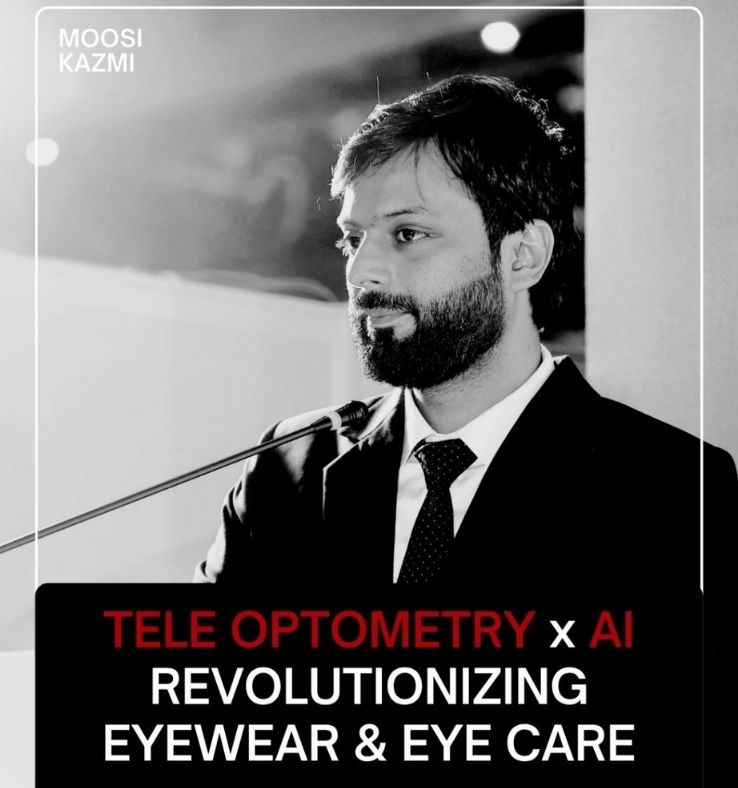Seeing is Believing: AI’s Breakthroughs in Eye Care
_(Facebook_Post)_(1).jpg)
Artificial intelligence (AI) is in vogue these days; it has impacted just about every field including optometry. Artificial intelligence (AI) is the science of developing computer systems that can perform operations which otherwise require human intelligence like visual perception, speech recognition, decision making and language translation. AI is changing the way eye care diagnostic, treatment and patient experience are delivered. The use of AI in early diagnosis and personalized care pathways as well as efficient practice management - made possible by the analysis of vast quantities of data with a high degree or precision. For more on recent developments in AI and how it can be used to benefit optometry practices, read the full article here.
AI IN DIAGNOSTICS
1. Automated Retinal Imaging:
- AI-powered retinal imaging systems arecapable of analyzing high-resolution images of the retina. These systems can detect early signs of diseases such as diabetic retinopathy, glaucoma, and age-related macular degeneration with remarkable accuracy. AI algorithms can identify subtle changes and patterns in the retina that may be missed by human eyes.
 |
2. Optical Coherence Tomography (OCT):
- AI enhances OCT by providing detailed analysis and interpretation of the scans. It can automatically segment retinal layers and detect abnormalities. This technology helps in early diagnosis and monitoring of diseases like macular degeneration and diabetic retinopathy.
3. Corneal Topography:
-
AI algorithms are being used to analyze corneal topography images, aiding in the diagnosis and management of conditions such as keratoconus and other corneal irregularities. This technology ensures precise measurements, leading to better fitting of contact lenses and planning of refractive surgeries.
AI IN PERSONALIZED TREATMENT PLANS
1. Customized Contact Lenses and Eyeglasses:
- AI-driven platforms can analyze a patient&s visual needs and preferences to recommend the most suitable contact lenses or eyeglasses. These systems consider factors such as lifestyle, visual habits, and individual eye characteristics to provide personalized solutions.
2. Surgical Planning and Outcomes:
- AI tools assist in planning surgeries, such as LASIK and cataract surgery, by analyzing patient data and predicting outcomes. They help surgeons choose the best techniques and intraocular lenses, leading to improved surgical precision and patient satisfaction.
3. Vision Therapy and Rehabilitation:
- AI is used to develop personalized vision therapy programs. By analyzing a patient’s progress and response to different exercises, AI can adjust the therapy plan to maximize effectiveness. This approach is particularly beneficial for patients with amblyopia, strabismus, and convergence in sufficiency.
AI IN PRACTICE MANAGEMENT
1. Appointment Scheduling and Patient Management:
- AI-powered systems streamline appointment scheduling, reducing wait times and enhancing patient satisfaction. They can also manage patient records, track medical history, and send reminders for follow-up visits and prescription refills.
2. Tele-optometry:
- AI enables remote eye examinations and consultations through tele-optometry platforms. These systems use AI algorithms to analyze data from remote examinations, providing accurate diagnoses and treatment recommendations. This approach increases access to eye care, especially in remote and underserved areas.
3. Inventory and Supply Chain Management:
- AI optimizes inventory management by predicting demand and automating stock replenishment. It ensures that the practice has the right products available, reducing costs and improving efficiency.
ENHANCING PATIENT EXPERIENCE
1. Virtual Try-On and Frame Selection:
- AI-driven virtual try-on tools allow patients to see how different frames will look on their face before making a purchase. These tools use facial recognition and augmented reality to provide an interactive and personalized shopping experience.
2. Chatbots and Virtual Assistants:
-
AI-powered chatbots can answer patient queries, provide information on eye care, and assist with appointment bookings. Virtual assistants guide patients through their treatment journey, ensuring they understand their diagnosis and follow the prescribed treatment plan.
3. Patient Education and Engagement:
- AI systems can provide personalized educational content to patients, helping them understand their eye conditions and treatment options. Engaged and informed patients are more likely to adhere to treatment plans and take proactive steps in managing their eye health.
RESEARCH AND DEVELOPMENT
1. AI in Clinical Trials:
- AI accelerates clinical trials by identifying suitable candidates, managing data, and analyzing results. It helps in discovering new treatments and understanding the efficacy of existing ones more efficiently.
2. Predictive Analytics:
- AI uses predictive analytics to foresee the progression of eye diseases. By analyzing large datasets, it can identify risk factors and predict outcomes, aiding in preventive care and early intervention.
3. Genetic Research:
- AI assists in genetic research by analyzing genetic data to identify markers associated with eye diseases. This research can lead to the development of targeted therapies and personalized medicine.
ETHICAL CONSIDERATIONS AND CHALLENGES
1. Data Privacy and Security:
- The use of AI in optometry involves handling sensitive patient data. Ensuring data privacy and security is paramount. Robust measures must be in place to protect patient information from breaches and misuse.
2. Bias and Fairness:
- AI systems must be designed to eliminate biases that could affect diagnosis and treatment. Ensuring that AI algorithms are trained on diverse datasets is essential to provide fair and accurate results for all patients.
3. Regulatory Compliance:
- The integration of AI in optometry must comply with healthcare regulations. Clear guidelines and standards are needed to ensure the safe and effective use of AI technologies.
AI is transforming optometry by enhancing diagnostic accuracy, personalizing treatment plans, and improving patient care. From automated retinal imaging to personalized vision therapy, AI offers numerous benefits that can revolutionize eye care. However, it is crucial to address ethical considerations and ensure regulatory compliance to fully harness the potential of AI in optometry. As technology continues to evolve, AI will play an increasingly vital role in shaping the future of eye care.

.jpg)

.jpg)
.jpg)
.jpg)


1.jpg)



.jpg)
.jpg)



_(Instagram_Post).jpg)
.jpg)
_(1080_x_1080_px).jpg)


with_UP_Cabinet_Minister_Sh_Nand_Gopal_Gupta_at_OpticsFair_demonstrating_Refraction.jpg)
with_UP_Cabinet_Minister_Sh_Nand_Gopal_Gupta_at_OpticsFair_demonstrating_Refraction_(1).jpg)

.jpg)








.jpg)



.png)




